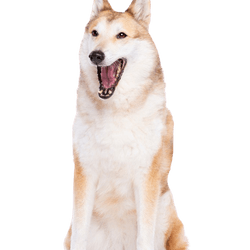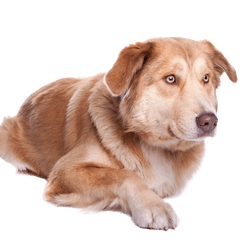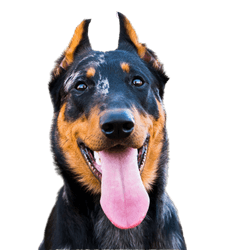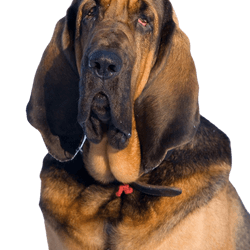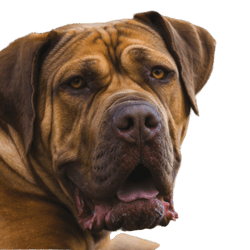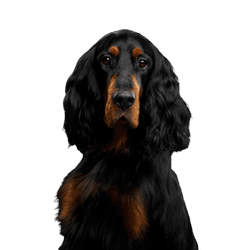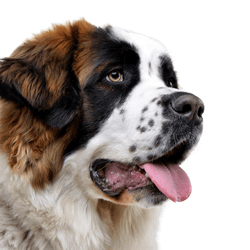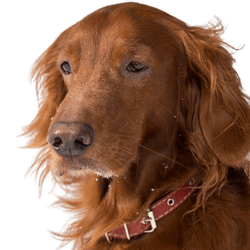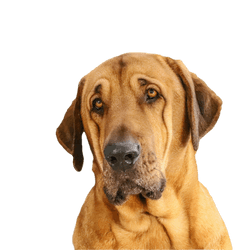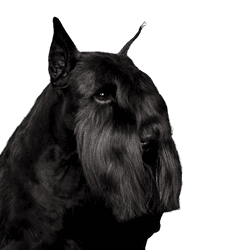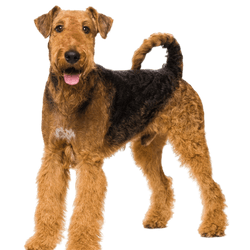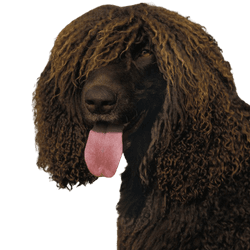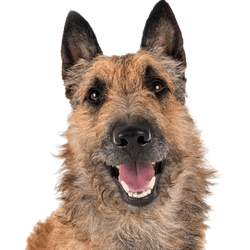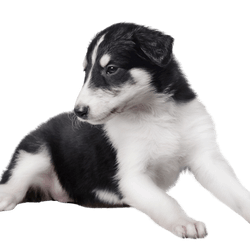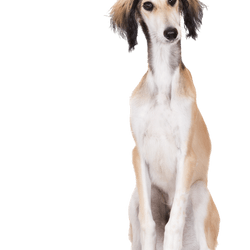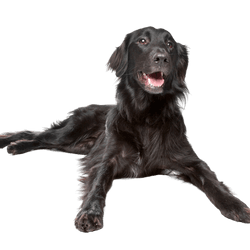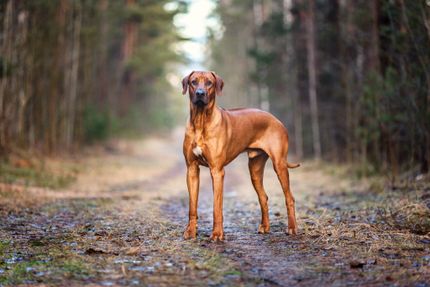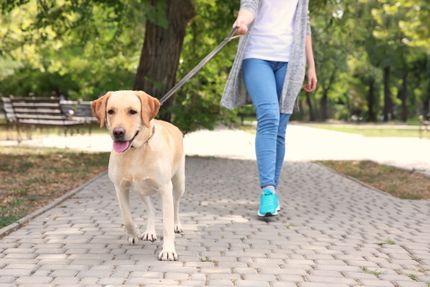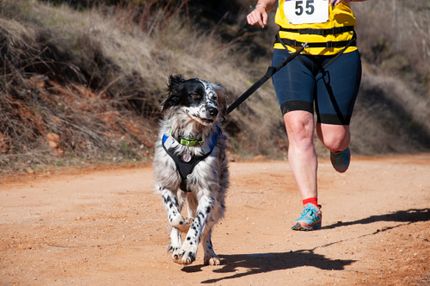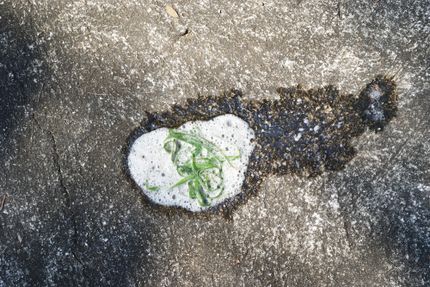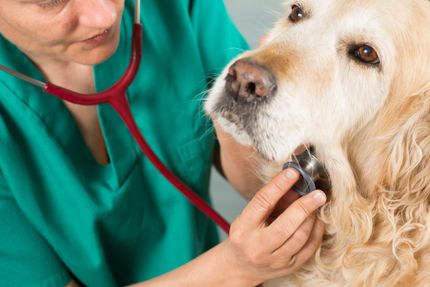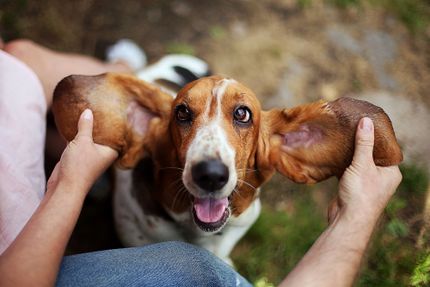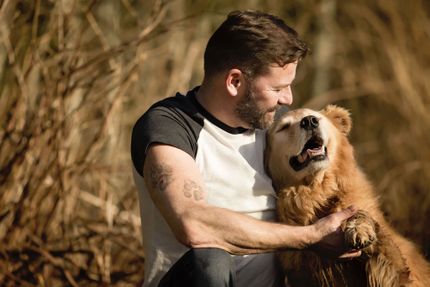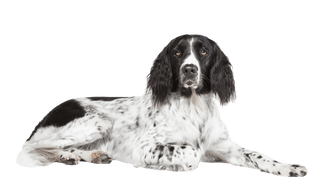
Münsterländer Breed description: Character & Co
Münsterländer
Facts & Origin
The Münsterland dog is characterised by its adaptable nature, agile work enthusiasm and good family spirit. The breed of pointing dogs now consists of two species: the small and the large Münsterländer. They differ mainly in size and coat pattern.
Origin of the Münsterländer
The small and large Münsterländer are two species of one and the same breed of hunting dogs. According to their origin, ancestors of the larger representative could already originate in antiquity. For he belongs to the group of pointing dogs with excellent characteristics for hunting and retrieving killed prey. The smaller representative also goes by the name "Heidewachtel" among hunters and lovers. It was bred from the Large Münsterland only at the beginning of the 20th century. At the same time, Münsterlanders are not only kept as hunting utility dogs, but also as pleasing family dogs.
Münsterländer and its breed characteristics
| Large Münsterlander | Small Münsterlander |
|---|---|
|
FCI Standard: 118; Group 7 (pointing dogs); Section 1 (continental pointing dogs); 1.2 Type Spaniel |
FCI Standard: 102; Group 7 (pointing dogs); Section 1 (continental pointing dogs); 1.2 Type Spaniel |
|
Appearance: black head, occasionally with white blaze; wide, contiguous pendulous ears with high base and round tip |
Appearance: brown head, occasionally with white blaze; drooping ears with round tip and high base wide or close fitting |
|
Breeding forms: White with black spots or plates or black mould |
Breeding forms: White, usually with brown plates, spots or coat, brown-white mould |
|
Physical characteristics: Strong and muscular body; long, dense and smooth to slightly wavy coat with water-repellent qualities; long tail with long flag - set high and carried flat |
Physical characteristics: Light, muscular body; body characteristics similar to the Large Münsterländer |
|
Head rather small in relation to the body |
head without strong stop; straight, slightly concave bridge of nose; tight fitting lips |
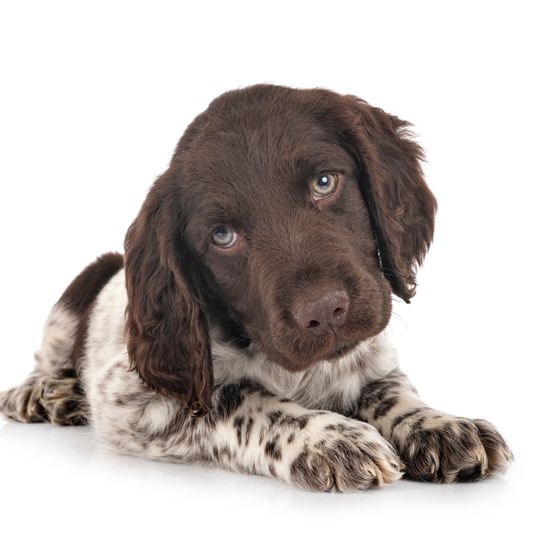
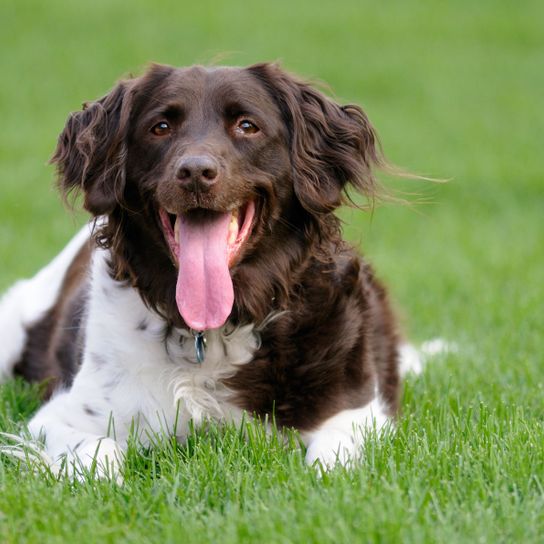
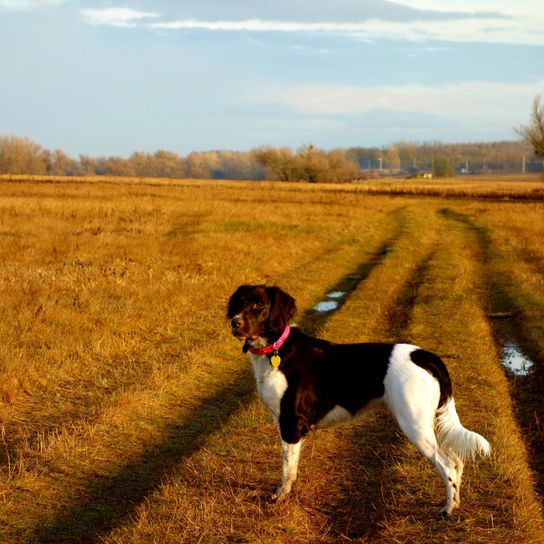
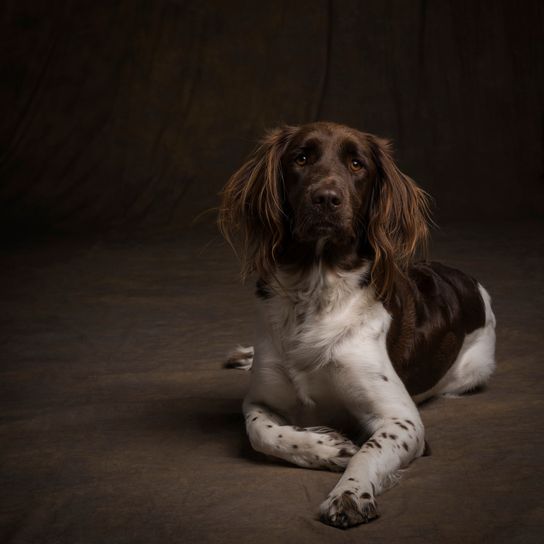
| Alternate Name | - |
| Origin | Germany |
| Life expectancy | 12 - 13 years |
| Care requirements | low-maintenance |
| Activity level | average |
| FCI group | Continental Pointing Dogs |
| AKC group | Foundation Stock Service |
| KC group | Gundog Group |
Attitude, character and temperament of the breed
Character of the Münsterländer
The Large Münsterlander might be family-friendly and fond of children, but as an old breed of hunting dogs it is characterised by a real working instinct. If you want to buy a Münsterlander, you have to be willing to put effort towards consistent training. Otherwise, you will have to look for your Münsterland dog every time you go for a walk in the forest. Just as eager and demanding is the character of the smaller representative of Münsterlander. However, this younger type of breed is better suited for keeping in a flat and a life where their hunting instinct isn't demanded. Both species are extremely affectionate towards their family, but clearly shy or even dismissive towards strangers.
Keeping and characteristics of the Münsterländer
You should be experienced with dogs already if you want to buy a Münsterländer. It's role as a family dog has to be trained as early as possible he to combat their very strong hunting instinct. If puppy training is successful, this active dog is happy to do a lot of outdoor activities. You can best do their stamina justice with retrieving games and sporting activities. With regard to nutrition you do not have to pay attention to anything in particular. Of course, the relation between activities and energy intake must be balanced for a healthy dog life. The beautiful, wavy hair needs to be combed thoroughly with a dog brush at least once a week. Otherwise, the priority for the two species of this breed is physical and mental stimulation.
Use of the Münsterlander
For good reason, the Münsterland dog of both sizes is called a hunting utility dog. Even today it is still used for sniffing out game and for pointing out when they scent prey. In addition, especially the small type of the Münsterländer has become a popular family dog, that feels completely comfortable and sufficiently challenged, for example, when kept on an agricultural area with connection to the living quarters.
Character
Usage
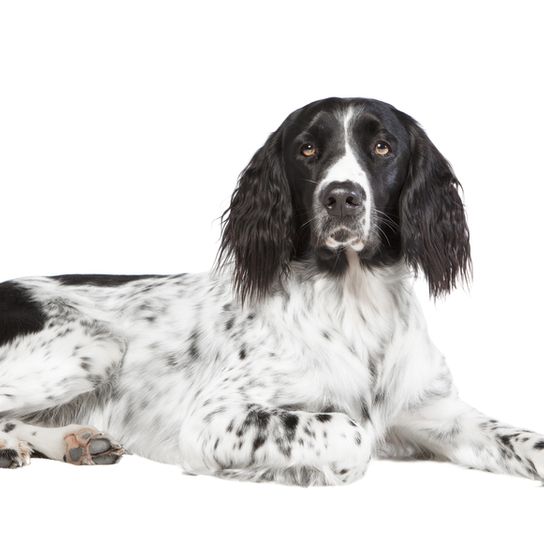

Health and breeding information
Breed typical diseases of the Münsterländer
Despite their very long breeding history, the Large Münsterländer does not show any typical diseases. However, both species tend to have problems with their teeth and eyes. With good care and regular check-ups you can prevent such problems from happening to your dog. Hip joint dysplasia can be down to a genetic weakness in the smaller Heidewachtel. Possible, but more likely due to the nature of the coat and eyes, are skin diseases or ear infections. Very rarely, autoimmune diseases can occur in the course of a dog's life.
What the Münsterland breeder pays attention to
A responsible breeder from Münsterland works with the parent animals and puppies according to their dispositions from the very beginning. This is a list of things on how you recognise a serious breeder:
- The parent animals and puppies have a pedigree to enable you to trace back certain character and physical traits.
- The breeder will only hand over their puppies to people that have dog experience. For this purpose they may even test your ability in practice (through walks together or certain training requirements).
- Responsible breeders are competent people you can contact in case problems arise even after the purchase.


Appearance and coat of the Münsterländer
According to the guidelines of breeders in Münsterland, the Large Münsterländer is only permitted for breeding in black and white variations. Nevertheless, you can find some specimens of this size in the older variation with brown and white coat. Brown-white is however desired for breeding the smaller species. The coat of both species is long and wavy, but by no means curly. The "trousers" on the rear upper legs and "feathers" on the front legs are the main characteristics of the smaller Heidewachtel. If you want to buy a * Münsterländer https://www.haustierratgeber.de/hunde/hunderassen/muensterlaender/, you can also recognise purebred specimens by their tightly fitting chaps and the straight bridge of the nose.
Size, weight and age expectation of the Münsterländer
Large Münsterländer:
- Size: 58 to 65 centimetres (males slightly bigger)
- Weight: 20 to 40 kilograms (depending on breeding)
- Average age: 12 to 15 years
Small Münsterländer:
- Size: 50 to 56 centimetres (males slightly bigger)
- Weight: 17 to 25 kilograms (depending on the breed)
- Average age: 12 to 15 years
| Fur length | medium |
| Fur | flat coated |
| Ear shape | Floppy Ear |
| Tail | fanned out |
| Anatomy | slim |
| Size ♀ | 50 - 58 cm |
| Weight ♀ | 18 - 27 kg |
| Size ♂ | 50 - 58 cm |
| Weight ♂ | 18 - 27 kg |
| Suitable For | - |
Colors
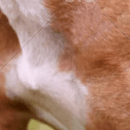

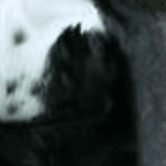



Other large dogs
Useful Articles
You can find articles that might interest you in the dogbible blog to match your favorite breed.
Visit our magazineto stay up to date on dog trends.
To find out more, view our Privacy Policy
Find here the breed that suits you and find out what character traits it has. Here you can also learn more about the origin, size and weight of your favorite breeds.
Matching your favorite breed, you'll find articles that might interest you on the dogbible dog blog.
Dog is not yet house trained, what should I do?
Heart disease in dogs - diagnosis & control
